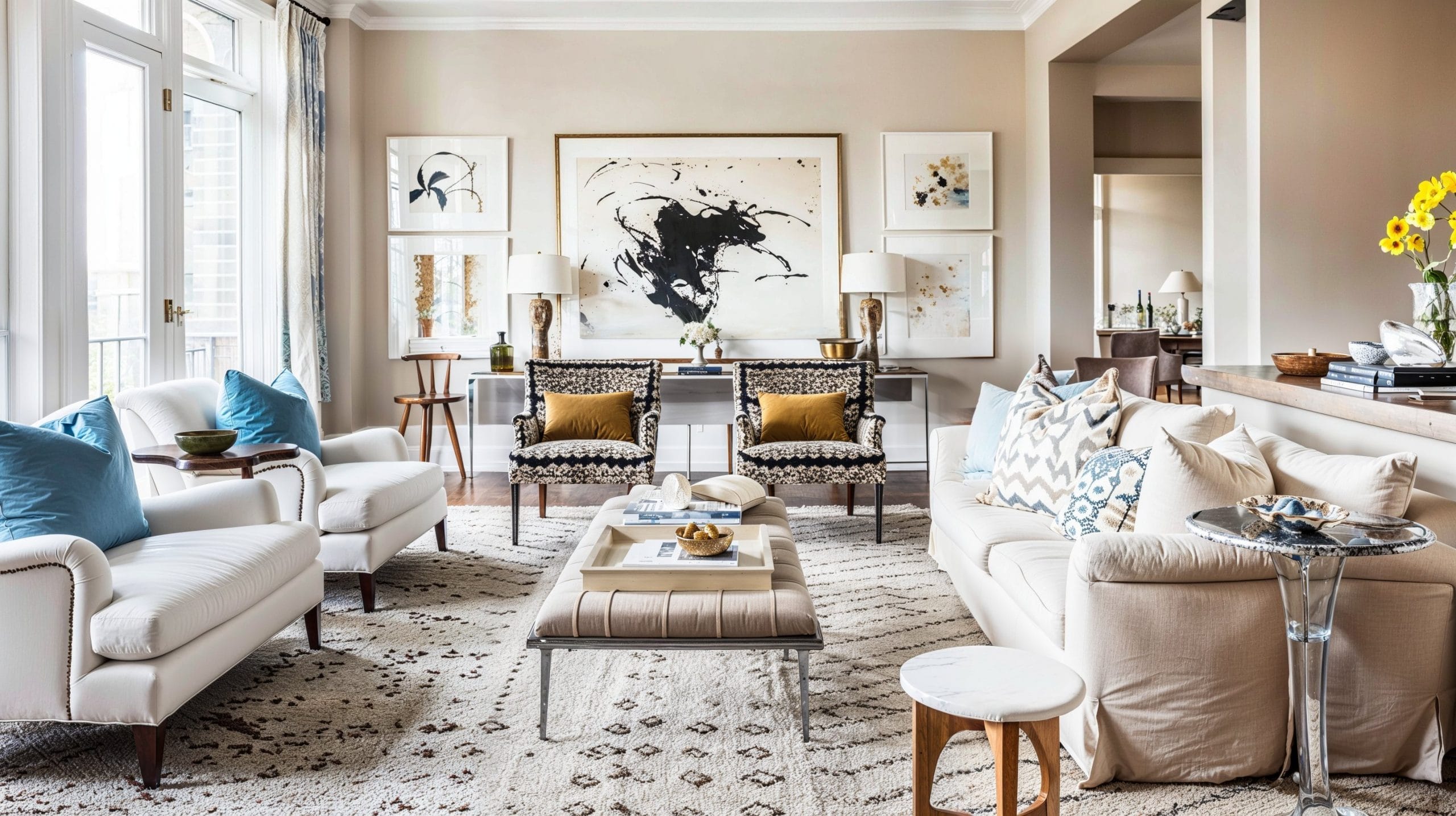Premier interior design firms deliver exceptional design solutions.
Premier interior design firms deliver exceptional design solutions.
Blog Article
Change Your Home With Important Concepts of Inside Style and Aesthetics
By understanding the impact of shade concept and the significance of texture and patterns, one can develop spaces that are not just visually enticing however additionally deeply personal. Attaining this equilibrium entails even more than simple decor; it includes a tactical setup and a keen understanding of just how each aspect engages within an area.
Recognizing Color Theory
Comprehending the principles of shade concept permits developers to develop areas that reverberate mentally with occupants while meeting practical demands. Each category plays an important function in developing consistency within a room.
The emotional effect of colors is profound; warm tones such as reds and oranges stimulate energy and warmth, while great tones like blues and environment-friendlies promote peace and serenity. The usage of complementary shades enhances visual passion, developing striking contrasts that can elevate a room's appeal.
Neutral shades, on the various other hand, act as a versatile backdrop, permitting various other design aspects to shine. It is important to consider variables such as lights and the room's function when choosing a shade palette, as these can alter the perception of shades throughout the day.
Ultimately, a well-considered color pattern can transform a room, promoting a feeling of comfort and design that aligns with the inhabitants' preferences. Proficiency of color concept is, as a result, an important ability for any indoor developer aiming to create unified and inviting atmospheres.
Achieving Balance in Design
How can designers accomplish a sense of equilibrium in their rooms? Accomplishing balance in design is basic to creating harmonious interiors. Developers can utilize 3 key kinds of equilibrium: balanced, unbalanced, and radial. Symmetrical equilibrium includes arranging elements evenly around a central point, promoting a sense of order and peace. This type frequently features sets of furniture or art work, improving aesthetic stability.
Asymmetrical balance, on the other hand, relies upon differing elements that still attain a natural look. This technique permits even more vibrant and casual arrangements, giving rate of interest while preserving equilibrium. By thoroughly choosing varying sizes, shades, and structures, designers can create an aesthetically compelling room that feels well balanced yet energetic.
Radial equilibrium emphasizes a central focal point with aspects emitting outside. This design is typically seen in round layouts, where furniture and decoration produce a natural border that attracts the eye internal.
Inevitably, attaining equilibrium requires thoughtful consideration of range, percentage, and the relationships in between components. interior design firms. By masterfully applying these balance concepts, developers can change spaces into settings that really feel both aesthetically pleasing and functionally harmonious, enhancing the overall experience for have a peek at this website residents
Value of Spatial Understanding

An eager sense of spatial awareness allows designers to recognize centerpieces within a room, leading the viewer's focus to crucial functions while maintaining a general feeling of unity. It additionally helps in the calculated positioning of illumination, which can drastically influence the assumption of area and state of mind. In addition, comprehending spatial partnerships makes it possible for the designer to deal with the certain demands of citizens, guaranteeing that each location serves its intended purpose without compromising visual appeals.
Ultimately, spatial recognition is vital for making the most of the possibility of any interior space. By meticulously considering the interaction in between dimensions, layout, and feature, developers can create environments that not only meet useful needs yet likewise evoke a feeling of convenience and elegance, improving the total living experience.
Integrating Texture and Patterns
Welcoming a diverse series of textures and patterns can significantly enhance the visual and responsive charm of an interior space. The calculated usage of different materials-- such as timber, steel, textile, and rock-- creates depth and passion, making a space feel a lot more welcoming and vibrant. For instance, integrating smooth surfaces with rough appearances can develop an equilibrium that attracts the eye and engages the senses.
When integrating patterns, consider both range and repeating. Huge patterns can function as centerpieces, while smaller, refined layouts can match various other components without frustrating the area. Layering patterns, such as pairing flower pillows with candy striped throws, adds intricacy and a feeling of harmony if carried out thoughtfully.
It is additionally crucial to keep a natural shade scheme, making sure that structures and patterns interact instead than compete for attention. By picking a couple of crucial textures and patterns, you can develop a combined aesthetic that mirrors your personal design while boosting the overall atmosphere of the room. Eventually, the careful unification of these aspects can change a mundane room into a sophisticated environment abundant with personality and warmth.
Personalizing Your Area
Producing an area that mirrors your personality is essential to attaining a truly inviting setting. Customization in indoor style enables you to instill your special design go right here and interests right into your home, changing it from a mere shelter into a haven that talks with who you are. Begin by choosing a color combination that reverberates with your emotions-- strong colors can invigorate, while soft tones use harmony.
Incorporate art work and decoration that reflect your passions, whether it be traveling, nature, or abstract principles. Showing individual collections, such as publications, photographs, or mementos, can evoke cherished memories and develop centerpieces within a space. Additionally, consider tailoring practical pieces, like upholstered furniture, to straighten with your aesthetic choices.

Final Thought
To conclude, the change of a home through the necessary concepts of interior style and aesthetics requires a detailed understanding of color concept, equilibrium, spatial awareness, texture, and personalization. Each aspect adds significantly to producing a harmonious and useful living environment - try this website Architecture Firm. By thoughtfully integrating these concepts, people can improve the visual allure and emotional vibration of their areas, eventually cultivating a home that mirrors distinct identities while giving convenience and usefulness
Report this page